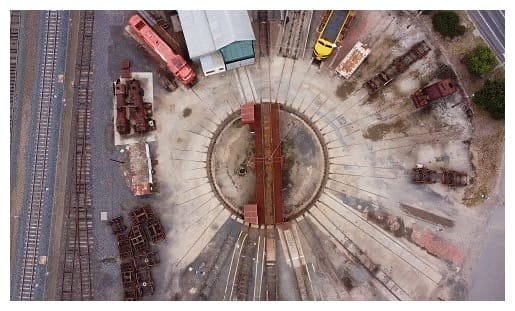Creating a virtuous system for local economic growth
Simon White | This article explains how to create a virtuous system for local economic development.

Success in local economic development requires an understanding of the local economic system. By creating a virtuous local economic system, we intervene to change different parts of the economy. We work with various local actors to create a virtuous system for local economic growth.
This article is a companion to another on a theory of change for local government and economic development.
Systems influence decisions
Much of local economic development is about the decisions that are made by local actors (e.g., businesses, residents, visitors, and consumers). These decisions are influenced by a range of interconnected factors found in the local economic system.
Experience in market systems development shows how improving key supporting functions and rules and regulations can improve how markets operate. Changes can be made to make these markets more inclusive and sustainable. This is done by promoting changes in actors’ behaviour and capacity and their relationships with each other.
Many elements of a desired local economic outcome result from moving parts in a system that can lead to enabling and supporting better results. I call this a virtuous local economic system based on the general idea of a virtuous cycle.
The vicious cycle of economic decline
Many of us are familiar with the opposite of a virtuous cycle: the vicious cycle.
The vicious cycle is a sequence of reciprocal cause and effect events in which two or more elements intensify and aggravate each other, leading inexorably to a worsening of the situation.
We see the vicious local economic system in what is often labelled “lagging economies”.
These are economies where unemployment is increasing or where the variety of jobs available is dominated by a single sector (e.g., mining). Many jobs in lagging economies are low-skilled. Investment in new technologies is also low.
Lagging economies may be losing residents. In many small, lagging rural economies, the population is in decline.
Lagging economies often lack the resources to provide residents and visitors with the products and services they require. Residents must travel to shop; post offices are closed; local recreational facilities are in disrepair. Only so many bingo nights can be held to raise funds for their maintenance.
Each of these factors is connected. Lousy jobs and declining community facilities are not conducive to new private sector investment. In some instances, these situations encourage fly-in, fly-out labour, which further hollows out the local economy’s ability to retain jobs and services and grow. In other situations, private investors will look for other places that are easier to do business in.
Towards a virtuous local economic system
A virtuous local economic system works the other way.
A virtuous cycle is a recurring cycle of events, the result of each one increasing the beneficial effect of the next. A virtuous economic cycle means higher wages stimulate consumption, leading to higher prices and profits.
A place with good, high-skilled jobs will attract more private investment and new, high-skilled jobs. A vibrant local economy will be driven by competition, innovation and the search for new markets. This is the path to local economic growth.
This is not to say that the two paths are predetermined. Far from it. The premise of local economic development is that local actors can choose which path to take.
The success of a virtuous local economic system is the design of interventions based on an assessment of the local economy and being clear about your assumptions.
Test your economic development assumptions
It is vital to be clear about your assumptions when creating local mechanisms for the desired change in economic development.
In my companion article, I describe the importance of a theory of change for local governments. This highlights the role of change mechanisms and the need to identify and interrogate assumptions.
A local government might produce a tourist brochure to attract new visitors, so they come and spend in the local economy, but will this create the desired result? Maybe it will. Perhaps it won’t.
The answer will be found in the analysis of the local economy. It also requires the assumptions underlying this strategy to be identified and tested. What are the assumptions relied upon to claim that a new tourist brochure will bring in more visitors to spend money?
This approach has strategic considerations, such as how the brochure will be distributed. There are also considerations based on how the desired change will be created in the local economy. For example, it may be assumed that the brochure will fill an information gap currently preventing tourists from choosing to visit and spend money. It might also be assumed that the local businesses will be able to meet the increased demand created by more visitors. Another assumption might be that the brochure will address a significant constraint to new visitors. It might not be the only constraint. But choosing to address this constraint suggests it is essential.
All these assumptions may be correct. But without identifying and interrogating them, you will never know and will be acting blind.
This includes the assumption that various other parts of the system will be reinforced. For example, more visitors may put pressure on local facilities and parking. If visitors come and have a negative experience, the results might not be what is desired.
Working on local economic systems
Thinking about the local economy as a system has many advantages when it comes to supporting local economic development:
- Develops good insight into how the systems operate. We are asked to consider the local economic actors and how they relate to each other. What are the barriers and root causes of poor local economic outcomes and the lack of local economic growth? This ongoing process of question and review requires research and analysis.
- Encourages novel solutions that are viable and sustainable beyond the lifetime of any individual local economic development program or project. Does the proposed solution hold potential only for a small number of local economic actors, or can it be expanded to benefit large numbers of people in future? Do new approaches to local economic development have sufficient incentives for all actors involved?
- Encourages local leadership and facilitation. Local governments are often in a good position to do this, but they can’t do it alone. Dialogue with local stakeholders and actors is essential. This includes supporting new linkages between private, public and civil society actors who may not have collaborated before.
- Local economic systems are dynamic. Actors change, relationships shift, and new opportunities emerge. This requires an adaptive approach to respond to changes and new opportunities, adjusting strategies to learnings that emerge through continuous review and evaluation.
Think systemically to create change
Local economic development is about change. It requires a systemic approach that recognises all parts of the system–how they interact and how a change in one part will influence change in another. This change produces local economic growth.
The vicious cycle of decline found in lagging economies highlights the negative results of these interconnections.
Creating a virtuous cycle in the local economic system focuses on creating and reinforcing a series of interventions, each increasing the beneficial effect of the next. This is a key feature of growing local economies.


